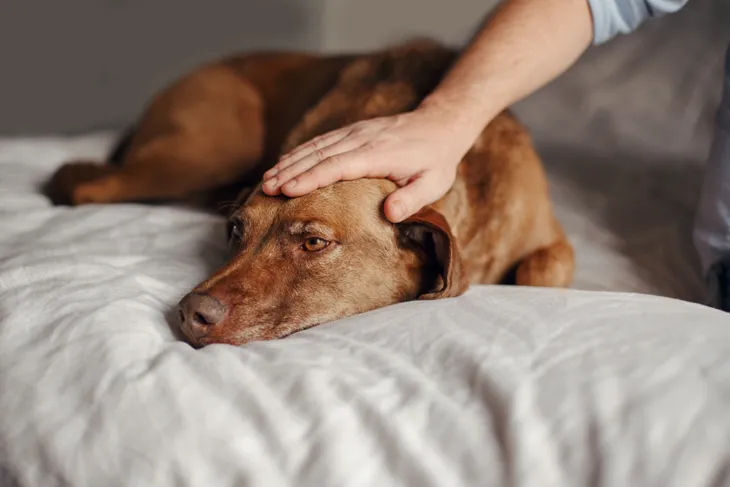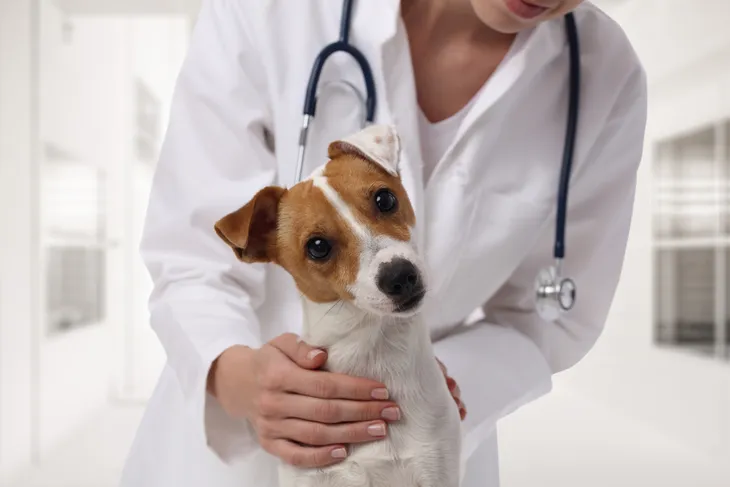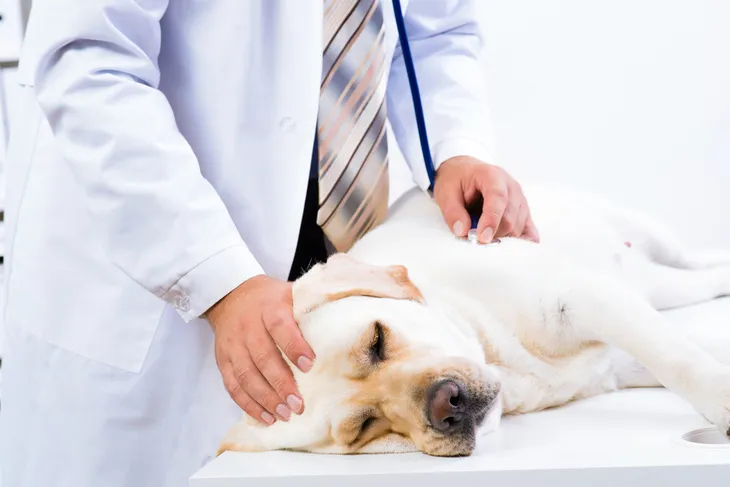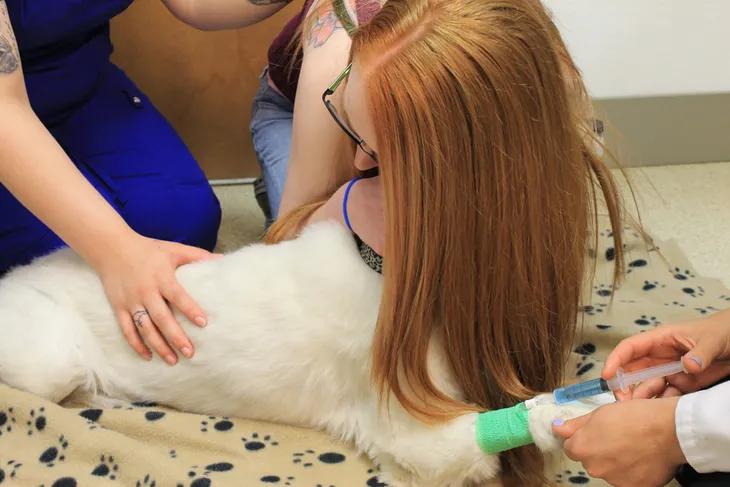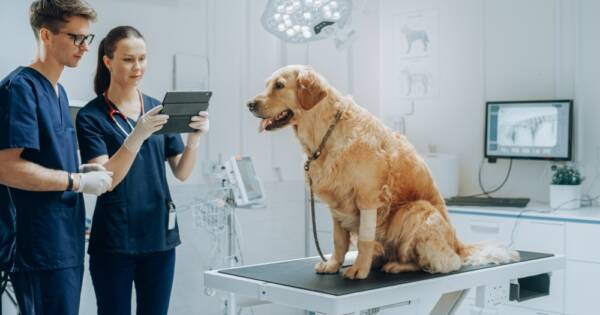While brain tumors in dogs are relatively rare, such a diagnosis is a sad and troubling situation for any pet owner. Veterinary research suggests that while causes can be identified in some cases, most canine brain tumors occur spontaneously for no identifiable reason. When causes can be ascertained, they are usually due to environmental and/or genetic factors.
Canine brain tumors can affect any dog breed, but some breeds appear to be more susceptible to them than others. Boston terriers, boxers, pugs, and other types of dogs with flat facial profiles tend to develop brain tumors at higher-than-average rates.
Symptoms of Brain Tumors in Dogs
In dogs with brain tumors, symptoms tend to appear quickly and worsen rapidly. Thus, it is very important to seek immediate veterinary attention if you notice any of these definitive signs (note: treatment options are listed after the 7 symptoms below):
Symptom: Seizures
Seizures are the single most common symptom associated with canine brain tumors. These seizures are usually acute, meaning that the animal remains conscious while the seizure takes place. They may occur as isolated incidents, or as a rapid series of repetitive seizures. A brain tumor may be suspected if a seizure occurs for the first time in a dog that is five years of age or older.
If your dog suffers a seizure, regardless of its age or health history, you should consider the situation a medical emergency and seek immediate veterinary attention for your pet.
Symptom: Behavioral Changes
Dogs with brain tumors may also display sudden and dramatic behavioral changes that are not consistent with the animal’s established temperament. For example, a previously well-adjusted pet may suddenly become aggressive. Another telltale behavioral symptom of a canine brain tumor is a pattern of circling movement, during which the dog walks or runs around and around in circles.
When major behavioral changes occur suddenly and for no apparent reason, it is wise to seek the opinion of a pet health professional, especially if the dog is older.
Symptom: Gait Impediments
In addition to circling movements, dogs with brain tumors may also develop conspicuous changes to their gait, or the way the walk. Most commonly, affected pets will suddenly develop an unsteady gait that many people informally refer to as “drunk walking,” as the dog will stagger and stumble much the way a person would after having too much to drink. In other cases, the dog may lose its coordination, or suddenly become unable to walk altogether.
Symptom: Sensory Changes
As canine brain tumors grow, they may press on and impede areas of the brain related to the dog’s sensory functions. In such cases, their presence may be accompanied by sharp, sudden losses in sensory capability, affecting sight and hearing in particular. While many animals tend to lose sensory function as they get older, age-related conditions usually have a much more gradual onset.
Brain tumors can also cause a dog’s pupils to become dilated to abnormally large sizes. If this accompanies a sudden loss of sight or hearing, consult a veterinarian.
Symptom: Loss of Cognitive Function
By and large, healthy dogs are alert, energetic, and intelligent creatures that respond well to human interaction. Most pet guardians have a clear knowledge of their dog’s baseline level of cognitive ability, and if a dog begins to lose its cognitive function, a brain tumor may be the underlying cause.
Cognitive impairments may include a diminished ability or inability to respond to commands or perform routine actions. The dog may also appear lost or confused, or might have trouble recognizing familiar places, peers, or people.
Symptom: Hypersensitivity
In some cases, dogs with brain tumors become hypersensitive to pain, and may overreact to being touched. This hypersensitivity often presents as flinching, whining, or seeming to be injured by even light and gentle handling. In most instances, this symptom is particularly pronounced in the animal’s neck area. Researchers believe it may be related to swelling or other internal changes caused by the presence and growth of a benign or cancerous mass in the nearby brain.
Symptom: Non-Specific Symptoms
Dogs with brain tumors sometimes present with nonspecific symptoms, such as unusual or excessive panting, loss of appetite, poor bladder control, and changes in urinary behavior. For instance, dogs with brain tumors may urinate indoors or in other inappropriate situations, despite having been trained not to do so.
Lethargy, or loss of energy, is another common, non-specific symptom of a canine brain tumor. Such symptoms should be investigated by a veterinarian, even if they are not accompanied by the specific indications listed above.
Treatment Options for Brain Tumors in Dogs
The prognosis of a canine brain tumor varies, depending on the age of the dog, the size of the tumor, and the speed of its growth. Regardless, prompt treatment is the key to giving your dog the best chance of survival. Canine brain tumors are usually treated in one or more of these five ways:
Treatment Option: Symptom Management
Some canine brain tumors can be medically managed in such a way that the symptoms diminish and the pet can return to some semblance of its normal self. The cornerstones of these interventions include steroids and anticonvulsant medications. Steroids can shrink the mass of the tumor, reducing its size and decreasing the pressure with which it presses on areas of the brain. Anticonvulsants can help control seizures, or even completely stop your dog from having seizures.
While these treatments can provide short-term relief, they are not a long-term solution. In most cases, they will extend the life of your pet by only a month or two.
Treatment Option: Radiation and Chemotherapy
In dogs, brain tumors can be treated with radiation and chemotherapy, just as they can in human patients. Such treatments are usually available only at specialized clinics, though they may also be offered at some university veterinary hospitals. Canine chemotherapy consists of drugs, while traditional radiation treatments involve temporarily anaesthetizing the dog’s cranial area to allow irradiation to take place.
Most radiation and chemotherapy regimens involve daily treatments for five days per week, which continue each week for a three-week period. While they can destroy tumorous masses, they can also affect healthy brain tissues, and as such, they carry a significant risk of side effects.
Treatment Option: Stereotactic Radiation
Another form of radiation therapy known as stereotactic radiation may also be a treatment option. This procedure is specially designed to attack only the tumor tissue, and it leaves the healthy surrounding brain tissues unaffected. Unfortunately, it comes with two major drawbacks: it is prohibitively expensive, and can easily cost more than $10,000. It is also available only at a few clinics, making travel a likely necessity and adding even more to the already considerable cost.
Treatment Option: Brain Surgery
Surgical interventions intended to remove part or all of the tumorous mass may also be an option, but as with stereotactic radiation, canine brain surgery is expensive and available only at a relatively small number of locations.
Brain surgery also carries a major risk of side effects, which can cause permanent changes to the dog’s mental activity and cognitive ability. Brain surgery can also make seizures worse in some dogs, and complications such as infection pose additional hazards.
Treatment Option: Euthanasia
Unfortunately, some canine brain tumors simply cannot be treated effectively and in a way that extends the pet’s life while improving its quality of life. In such cases, your veterinarian may present euthanasia as an option.
While having to put down your beloved pet is obviously a very difficult and emotional decision, it will relieve your dog’s suffering and prevent it from experiencing even worse pain as the brain tumor continues to grow. If no other option is available, it may be the most humane thing to do.






